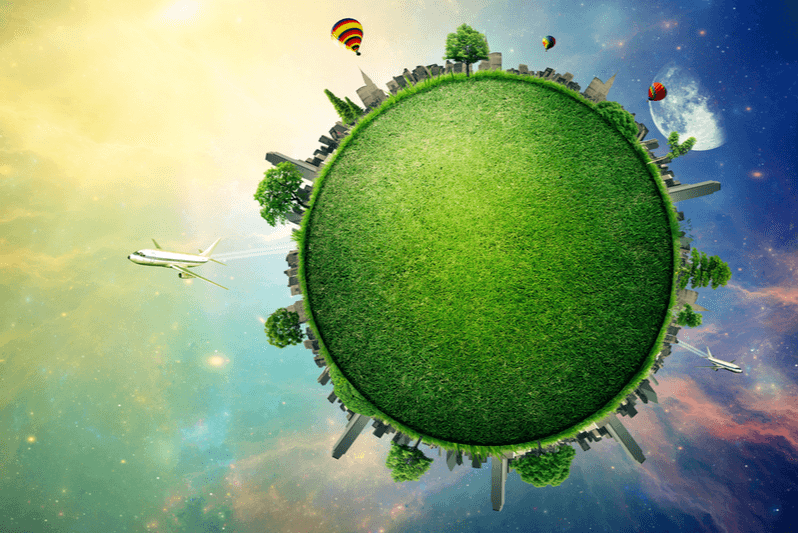As the world grapples with climate change, the development and adoption of green technologies are more critical than ever. These technologies aim to reduce carbon emissions, conserve resources, and promote sustainability. Here’s a look at the top green technologies set to make a significant impact in 2024.
1. Renewable Energy Advances
Solar energy continues to lead the way in renewable energy. In 2024, we can expect significant advancements in solar panel efficiency and affordability. Technologies such as perovskite solar cells and bifacial panels are set to revolutionize the market, offering higher energy yields and lower production costs.
2. Wind Energy Improvements
Wind energy is another key player in the renewable sector. The development of larger, more efficient turbines and floating offshore wind farms will enable the capture of wind energy in previously inaccessible areas, boosting overall energy production.
3. Energy Storage Solutions
Energy storage is crucial for balancing supply and demand in renewable energy systems. In 2024, we anticipate advancements in battery technology, including:
Solid-state batteries offer greater energy density, longer life spans, and enhanced safety compared to traditional lithium-ion batteries. These improvements are expected to make renewable energy storage more efficient and cost-effective.
Large-scale energy storage systems, such as pumped hydro storage and advanced battery farms, will play a vital role in stabilizing the grid and ensuring a consistent energy supply from intermittent renewable sources.
4. Electric and Autonomous Vehicles
The transportation sector is undergoing a green revolution with the rise of electric and autonomous vehicles. Key trends for 2024 include
EVs are becoming more affordable, with longer ranges and faster charging times. Advances in battery technology and charging infrastructure will make EVs a viable option for more consumers.
Self-driving technology is expected to enhance the efficiency of transportation networks. Autonomous electric vehicles will reduce traffic congestion, lower emissions, and improve road safety.
5. Green Building Technologies
Sustainable construction practices and materials are essential for reducing the environmental impact of buildings. Innovations in this area for 2024 include:
Smart buildings use advanced sensors and automation systems to optimize energy use. These buildings can adjust lighting, heating, and cooling based on occupancy and environmental conditions, significantly reducing energy consumption.
The use of sustainable materials, such as recycled steel, cross-laminated timber, and eco-friendly insulation, will become more prevalent. These materials not only reduce the carbon footprint of construction but also improve the energy efficiency of buildings.
6. Carbon Capture and Storage (CCS)
Carbon capture and storage technologies are essential for mitigating climate change by capturing carbon dioxide emissions from industrial sources and storing them underground. In 2024, advancements in CCS will focus on improving efficiency and reducing costs, making this technology more viable for widespread adoption.
7. Agricultural Innovations
Sustainable agriculture is crucial for feeding a growing population while minimizing environmental impact. Key technologies include:
Vertical farming allows for the cultivation of crops in stacked layers, often in urban environments. This method uses less land and water and can produce food year-round.
Precision agriculture uses data analytics, GPS, and IoT devices to optimize farming practices. These technologies help farmers apply the right amount of water, fertilizers, and pesticides, reducing waste and increasing yields.
The circular economy aims to minimize waste and make the most of resources. Innovations in this area include:
Waste-to-energy technologies convert waste materials into usable energy, reducing landfill use and generating renewable energy.
8. Biotechnology for Sustainability
Biotechnology offers solutions for sustainable living through the development of bio-based products and processes. Key areas of innovation include:
a. Biofuels
Next-generation biofuels derived from algae, agricultural waste, and other renewable sources offer a sustainable alternative to fossil fuels.
b. Bioplastics
Bioplastics made from renewable resources are biodegradable and reduce reliance on traditional plastics, which are harmful to the environment.
Conclusion
The green technologies of 2024 promise to drive significant progress in sustainability and environmental conservation. From renewable energy and electric vehicles to smart buildings and biotechnology, these innovations will help reduce our carbon footprint and create a more sustainable future. Embracing these technologies will be crucial for addressing the challenges of climate change and resource depletion.


I like this weblog it’s a master piece! Glad
I observed this ohttps://69v.topn google.Leadership